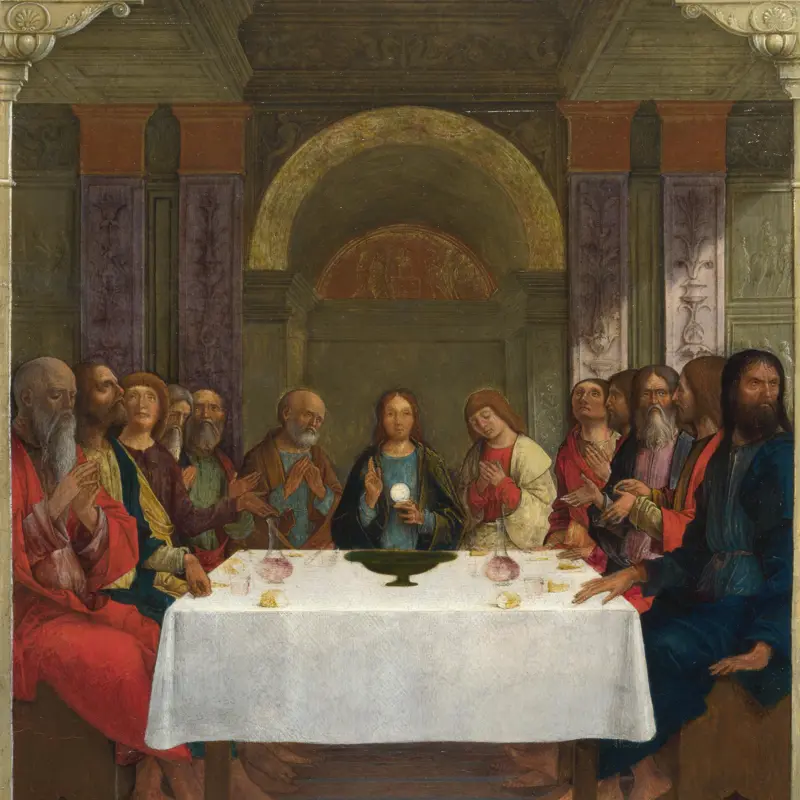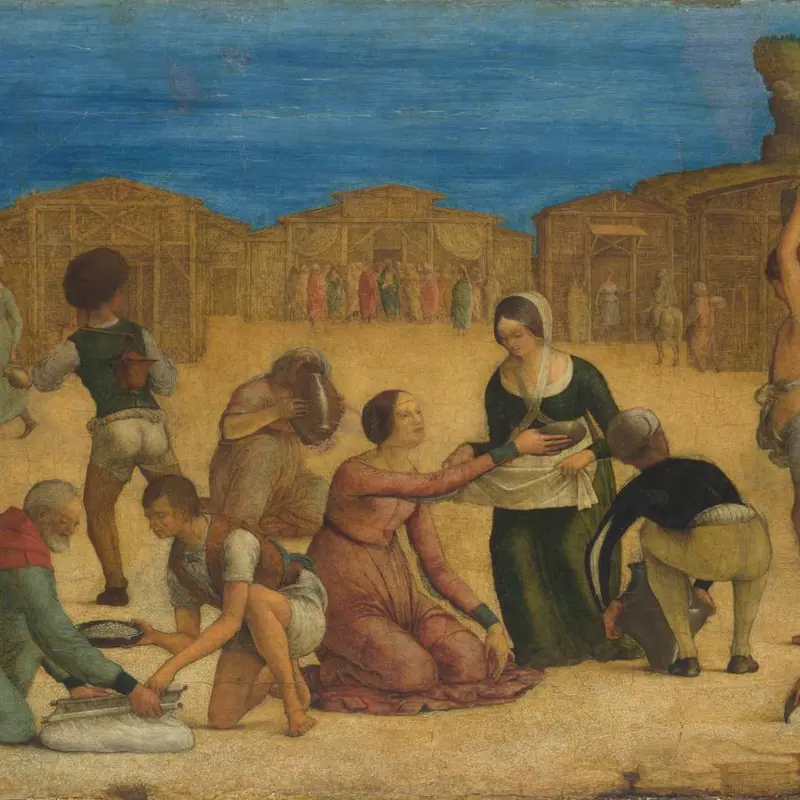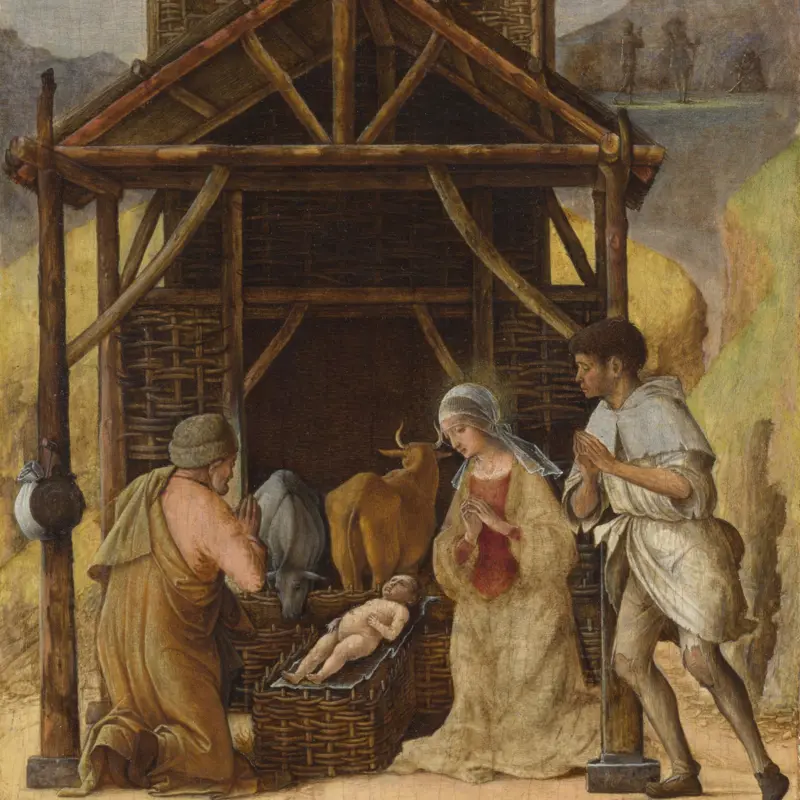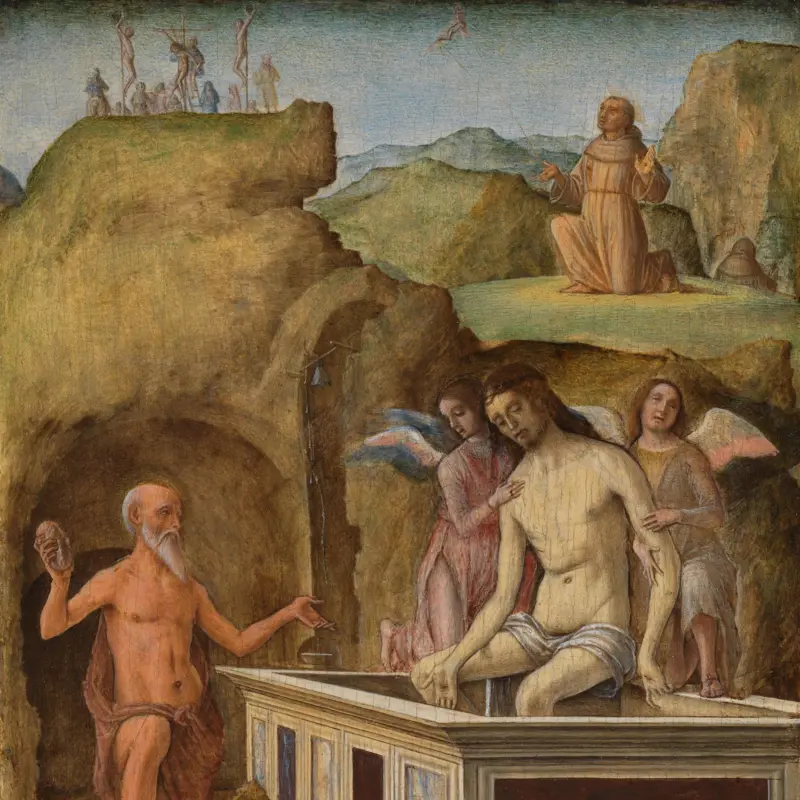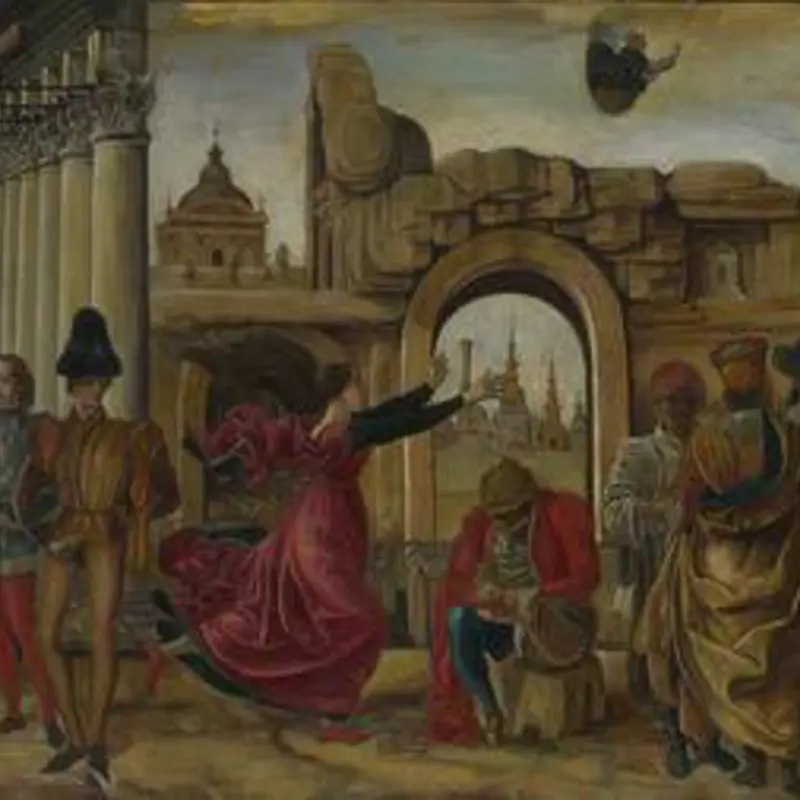Ercole de' Roberti, 'The Institution of the Eucharist', probably 1490s
About the work
Overview
Jesus sits at the head of the table, surrounded by his disciples, holding up a piece of bread, which he blesses: this is the Last Supper. Ercole’s skill at painting detail on a small scale is clear: each disciple has a different facial expression, and the transparent glasses, the carafes and the morsels of bread on the table are painted like a tiny still life.
This small panel has an unusual dual function. It was the central panel of a predella – the lowest part of an altarpiece – but evidence of a keyhole suggests that it was also the door of a hidden container housing the bread eaten at Mass. The image is appropriate for such a container, often known as a tabernacle, because at the Last Supper Jesus taught his disciples to eat bread and wine in memory of him, a rite that later became the Eucharist, or Holy Communion. To the panel’s right was Ercole’s The Israelites gathering Manna.
Key facts
Details
- Full title
- The Institution of the Eucharist
- Artist
- Ercole de' Roberti
- Artist dates
- Active 1479, died 1496
- Part of the series
- Two Panels from a Predella
- Date made
- Probably 1490s
- Medium and support
- Egg tempera on wood
- Dimensions
- 29.8 × 21 cm
- Acquisition credit
- Bought, 1882
- Inventory number
- NG1127
- Location
- Room 14
- Collection
- Main Collection
- Previous owners
Provenance
Additional information
Text extracted from the ‘Provenance’ section of the catalogue entry in Martin Davies, ‘National Gallery Catalogues: The Earlier Italian Schools’, London 1986; for further information, see the full catalogue entry.
Exhibition history
-
2011Devotion by Design: Italian Altarpieces before 1500The National Gallery (London)6 July 2011 - 2 October 2011
-
2023Ercole de' Roberti e Lorenzo CostaPalazzo dei Diamanti18 February 2023 - 19 June 2023
Bibliography
-
1951Davies, Martin, National Gallery Catalogues: The Earlier Italian Schools, London 1951
-
1986Davies, Martin, National Gallery Catalogues: The Earlier Italian Schools, revised edn, London 1986
-
2001
C. Baker and T. Henry, The National Gallery: Complete Illustrated Catalogue, London 2001
About this record
If you know more about this work or have spotted an error, please contact us. Please note that exhibition histories are listed from 2009 onwards. Bibliographies may not be complete; more comprehensive information is available in the National Gallery Library.
Images
About the series: Two Panels from a Predella
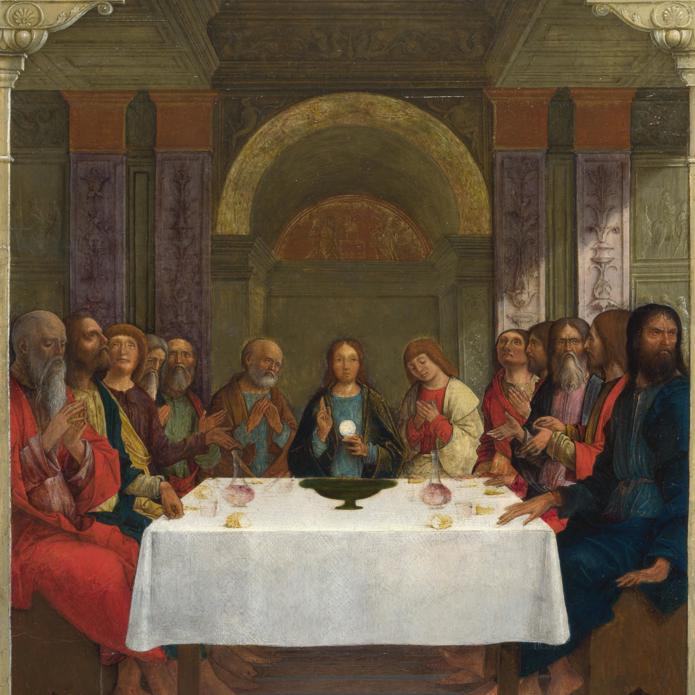
Overview
The Institution of the Eucharist and The Israelites gathering Manna were once part of a predella – a row of scenes along the base of an altarpiece – made for the church of San Domenico in Ferrara. The main panel showed Christ after his death, lying on his grieving mother’s lap, surrounded by mourners. Two of these figures are portraits of the Duke and Duchess of Ferrara. The altarpiece may have been made to commemorate the death of the Duchess, who had a particular interest in the Corpus Christi (‘body of Christ’), especially its celebration at the Eucharist. The predella probably concealed a container for the bread of the Eucharist, disguised by the image of the Last Supper, which also functioned as the container’s door. The story of the Israelites gathering manna – a heavenly ‘bread’ that fed them during their travels in the wilderness before reaching Israel – was often interpreted as a forerunner of the ‘heavenly bread’ of Christ’s body.

